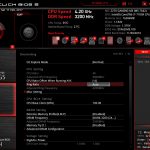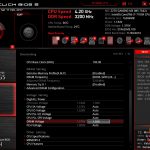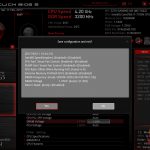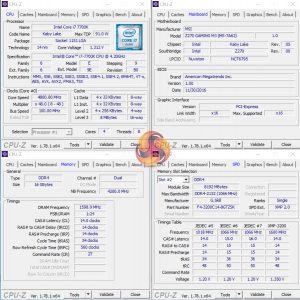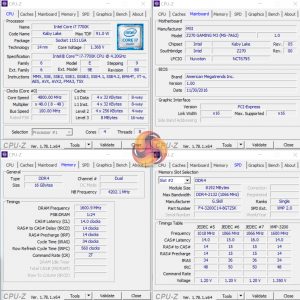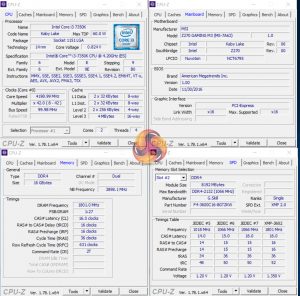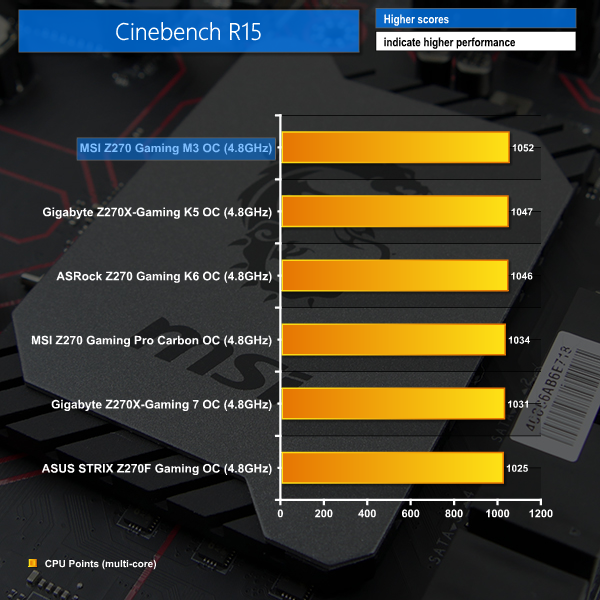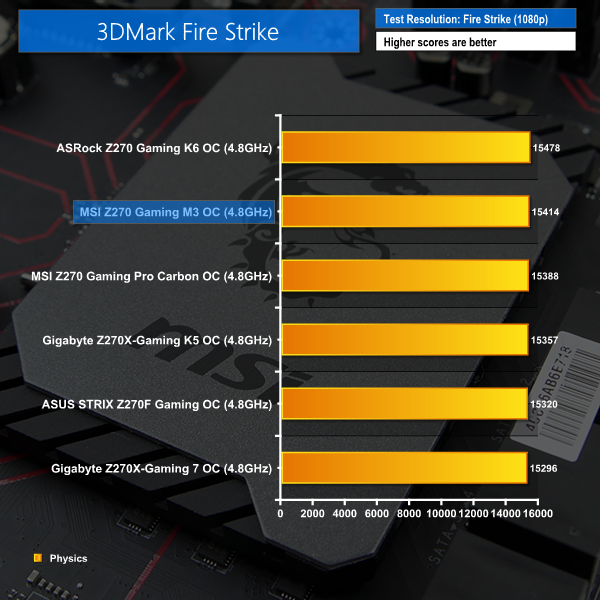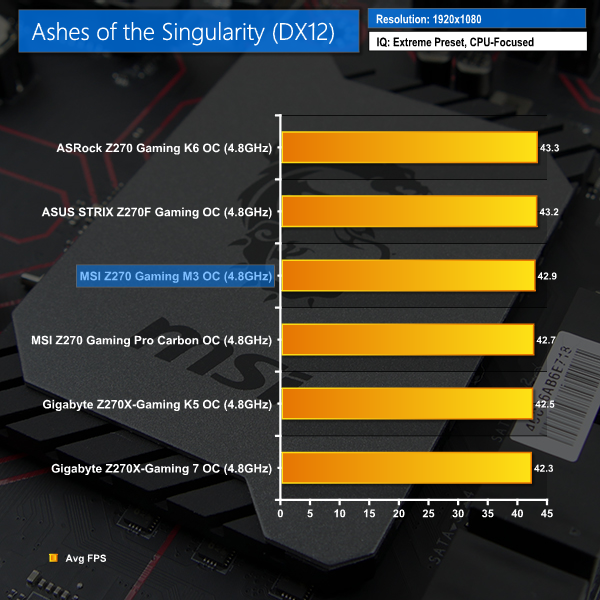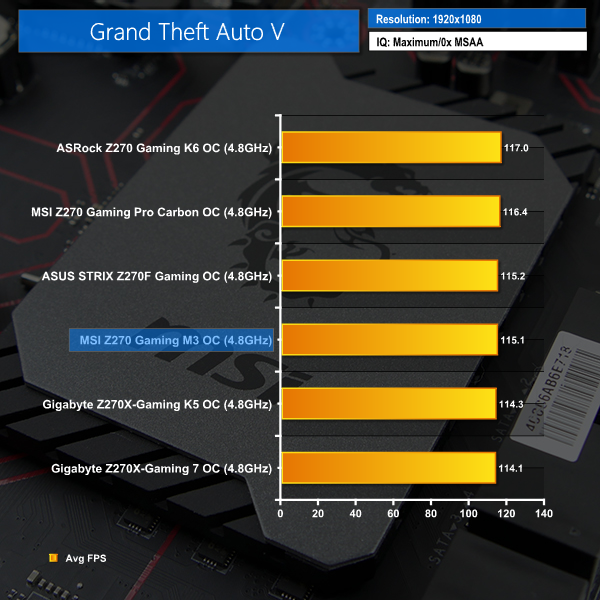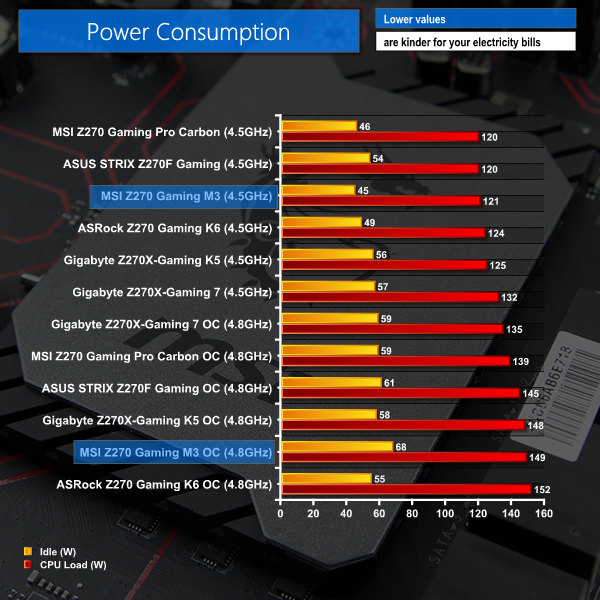Automatic CPU Overclocking:
MSI's straightforward Game Boost overclocking preset took our Core i7-7700K to 4.8GHz with the click of one button. The overclocking configuration used a core voltage of 1.30V and a -4x AVX offset on the CPU multiplier to maintain stability. Our 3200MHz DDR4 memory kit was set to operate at its rated speed, which was good to see.
There was a slight overshoot in load voltage, but nothing that represents cause for concern. Both the 4.8GHz and 4.4GHz AVX-based operating frequencies were checked and worked with stability.
Manual CPU Overclocking:
To test the MSI Z270 Gaming M3 motherboard’s CPU overclocking potential, we first increased the CPU VCore to 1.35V and applied the Mode 4 LLC setting in order to deliver a constant voltage close to our intended 1.35V.
We maintained the DRAM frequency at 3200MHz to take its stability out of the overclocking equation. Cache frequency was maintained at its stock MCT value of 4.2GHz.
The MSI Z270 Gaming M3 took our Core i7-7700K to its 4.8GHz Prime-stable limit. Voltage overshoot was a little higher than we would have liked at 18mV more than we input but this is not a worrying level and is decent for a mid-range motherboard.
3600MHz XMP Memory:
We test the motherboard's ability to run G.Skill's high-speed 16GB DDR4 TridentZ kit at a 3600MHz XMP setting. High-speed XMP settings can prove a challenge for motherboard designers when optimising the settings for stability at the intended DRAM frequency.
We actually used a Kaby Lake Core i3-7350K to test if the motherboard's XMP settings would accept 3600MHz DDR4 and it functioned correctly.
Overclocked Performance
As a performance comparison, we have included the results from five other Z270 motherboards. The maximum overclocked configuration achieved with each board was a 4800MHz (48 x 100MHz) processor frequency whilst using 3200MHz CL14 memory.
Overclocked performance was on par with competing Z270 motherboards.
Power
We leave the system to idle on the Windows 10 desktop for 5 minutes before taking a reading. For CPU load results we run AIDA64 CPU, FPU, and Cache stress tests and take a reading. The power consumption of our entire test system (at the wall) is shown in the chart.
Sensible voltage levels gave the Z270 Gaming M3 good power draw numbers at stock speeds. The voltage overshoot when overclocked had a slightly negative influence on power draw readings, putting MSI's Z270 Gaming M3 close to the highest overclocked load draw of our competitors.
Be sure to check out our sponsors store EKWB here
 KitGuru KitGuru.net – Tech News | Hardware News | Hardware Reviews | IOS | Mobile | Gaming | Graphics Cards
KitGuru KitGuru.net – Tech News | Hardware News | Hardware Reviews | IOS | Mobile | Gaming | Graphics Cards


